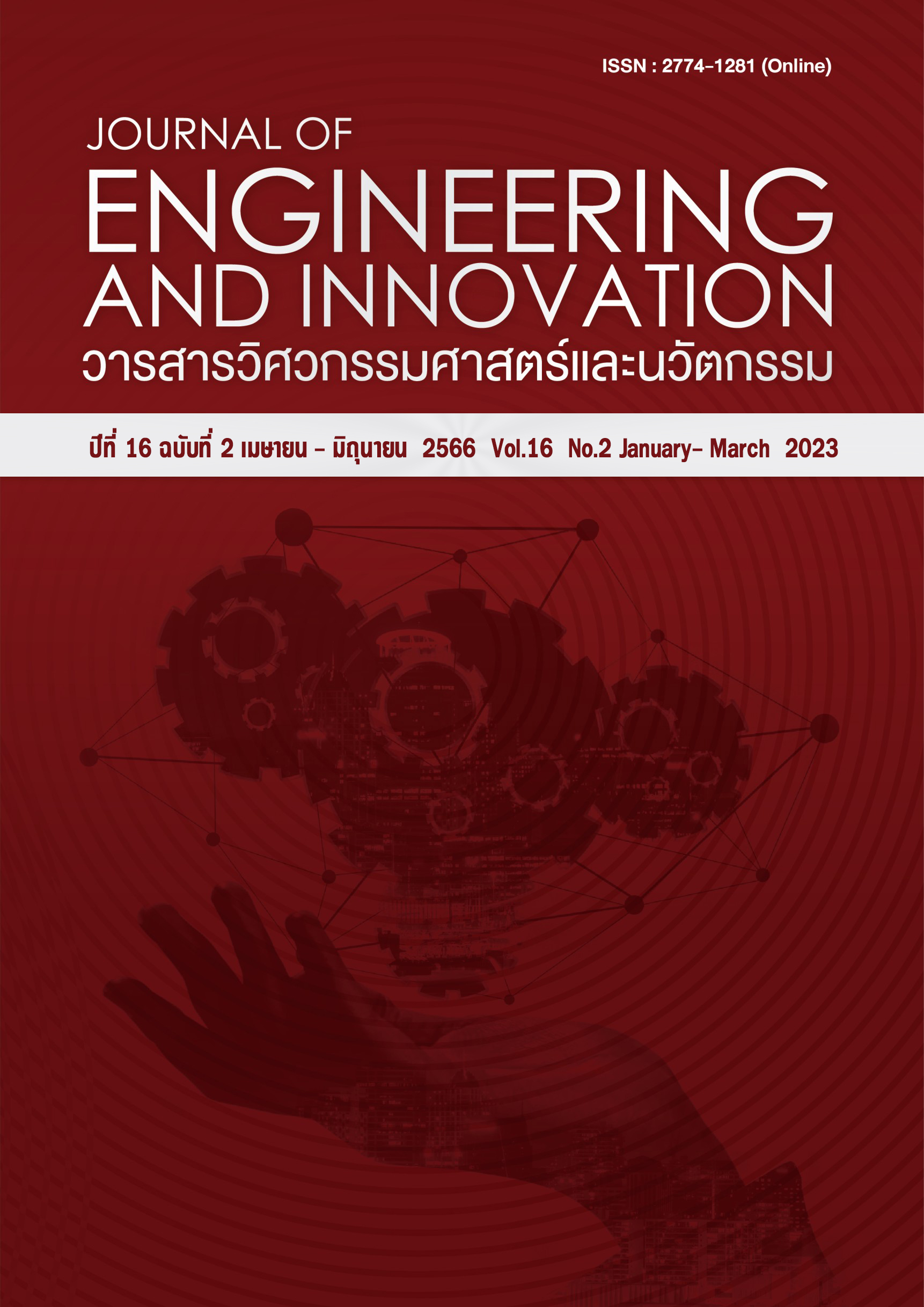A theoretical and experimental study on the use of electrostatic principle for removal of equivalent particle size of viruses for personal protective equipment applications
Main Article Content
Abstract
In this paper, the use of electrostatic principle for removal of equivalent particle size of viruses for personal protective equipment applications was theoretical and experimental studied. The electrostatic collector used in this study was designed, constructed, and evaluated. An analytical model was developed to investigate particle transport inside the electrostatic collector. In this study, experimental investigations were carried out for neutralized particles of 100 nm in diameter that is an equivalent particle size of viruses, the positively applied voltage at the inner electrode ranged from 1 to 5 kV and aerosol flow rates ranged between 0.6 and 1.5 L/min. The calculation results showed that all neutralized particles of 100 nm in diameter could precipitate on the outer electrode of the electrostatic collector at applied voltage of about 5 kV and aerosol flow rate of about 0.6 L/min. For all aerosol flow rates, an increase in applied voltage produced an increase in particle collection efficiency of the collector. Experiments confirmed that the efficiency of the electrostatic collector could increase over 90% at an applied voltage of about 5 kV for all aerosol flow rates. The developed electrostatic collector proved to be particularly useful in removing equivalent particle size of viruses for personal protective equipment applications.
Article Details
References
Department of Disease Control. COVID-19 situation report. Available from: https://covid19.ddc.moph. go.th/ [Accessed 18th May 2021].
Thai PBS. Thai PBS News. Available from: https://news.thaipbs.or.th/content/303786 [Accessed 18th May 2021].
Intra P. Electrostatic aerosol measurement and control technology. Bangkok: ChulaPress Publishing; 2019.
Masuda S, Hosokawa S, Tu X.-L, Tsutsumi M, Ohtani T, Tsukahara T, Matsuda N. The performance of an integrated air purifier for control of aerosol, microbial, and odor. IEEE Transactions on Industry Applications. 1993; 29(4): 774-780.
Okubo M, Yamamoto T, Kuroki T, Fukumoto H. Electric air cleaner composed of nonthermal plasma reactor and electrostatic precipitator. IEEE Transactions on Industry Applications. 2001; 37(5): 1505-1511.
Park CW, Hwang J. Susceptibility constants of airborne bacteria to dielectric barrier discharge for antibacterial performance evaluation. Journal of Hazardous Materials. 2013; 15(244-245): 421-428.
Hoenig SA, Sill GT, Kelley LM, Garvey KJ. Destruction of bacteria and toxic organic chemicals by a corona discharge. Journal of the Air Pollution Control Association. 2012; 30(3): 277-278.
Intra P, Yawootti A, Asanavijit V, Vinitketkumnuen U. Development of an indoor air cleaner for a non toxic room by electrostatic technique. KMUTT Research and Development Journal. 2012; 35(3): 361-382.
Tintachart K, Norkaew W, Yawootti A, Intra P. Modification and Field Testing of an Indoor Electrostatic Air Purifier. Journal of KMUTNB. 2016; 26(2): 31-46.
News Medical Life Sciences. The Size of SARS-CoV-2 and its Implications. Available from: https://www. news-medical.net/health/The-Size-of-SARS-CoV-2-Compared-to-Other-Things.aspx [Accessed 18th May 2021].
Intra P. Filtration Efficiency of Surgical Masks, Fabric Masks and N95/KN95/FFP1/FFP2 Masks Available for Use during the COVID-19 Pandemic in Thailand. Thai Science and Technology Journal. 2021; 29(5): 904-918.
Intra P, Tippayawong N. Use of electrostatic precipitation for excess ion trapping in an electrical aerosol detector. Journal of Electrostatics. 2011; 69(4): 320-327.
Intra P, Yawootti A, Rattanadecho P. Numerical and experimental studies of collection efficiency of an ion electrostatic collector for a mini-volume electrical PM detector. Journal of Electrostatics. 2014; 72(6): 477-486.

